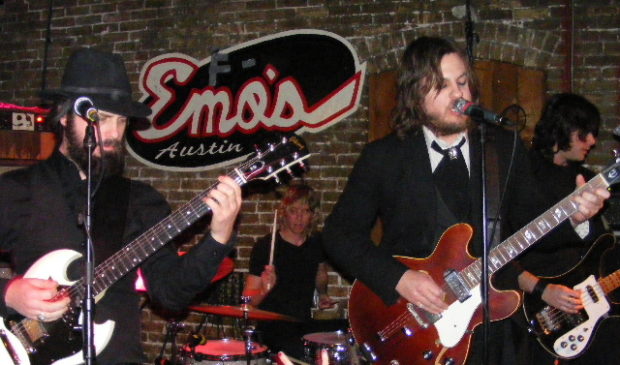Tourism Commission examines whether hotel tax could keep live music on Sixth Street
Thursday, April 11, 2019 by
Chad Swiatecki The handful of music venues still operating in the city’s historic district along Sixth Street could be considered for preservation and infrastructure improvements using money from the Hotel Occupancy Tax.
That idea was one of several offered for further examination by the Tourism Commission this week as the group considered its overall mission and role in helping City Council decide how to allocate money from the 15 percent tax paid by hotel guests.
At issue was the way state law tightly regulates how cities can use the funds generated by the tax. Some of the allowed uses are paying for debt and operations for convention centers, tourism promotion and preservation of historic structures. Until a recent expansion of local regulations and funding, the city had for years been unable to find historic projects that qualified for funding.
During discussion that preceded a decision to form a working group to look at possible expansion of HOT revenue uses, Commission Chair Catlin Whitington said he’d advocate dedicating money to helping music venues in the district make improvements that would let them add capacity and expand business operations to generate more revenue.
“If we were to look at a place to dedicate historic funds that is very well visited by tourists and is a historic district, the old Pecan Street area would be a place to look at,” he said. “One way to potentially look at that and address some of the need down there would be to look at venues that are operating as live music venues and figure out what kind of infrastructure enhancements within those venues that fit within the use of historic funding could help them to preserve their bottom line and strengthen their functionality as music venues.”
Whitington noted that the area earned national fame decades ago as a hotbed for live music. Today, most of the businesses in the historic district, which runs along Sixth Street and some off its offshoots from the Interstate 35 frontage road to Lavaca Street, are mostly watering holes and shot bars. Among the music venues in that area are Flamingo Cantina, Dirty Dog, the Parish, Vulcan Gas Company and the space that held the original Emo’s, which has remained largely idle since 2011 in large part because potential operators have found it too expensive to remodel and bring up to code.
Giving one example, Whitington said it would be helpful for clubs operating in historic buildings to be able to receive money for new sprinkler systems that would allow for increased customer headcount.
Commission members often spend much of their monthly meetings debating ways to use portions of the city’s HOT revenue outside of the currently capped “bucket” for arts funding. At the beginning of the meeting, Commissioner Michael Cannatti suggested that the city’s legal department might be operating too conservatively in its previous guidance on what the state might allow.
“I really do think there are other allowable uses for Hotel Occupancy Taxes that we could recommend to Council to consider,” he said. “When we’ve had presentations from the city legal department they’ve provided pretty conservative readings, and I’d like to see us with a working group dive into some of the details of other categories of allowable uses within state law. I’m not going to advocate stretching it unduly but I think we’ve gotten a very conservative read from the city.”
Commissioner Scott Joslove, a hotel industry executive who has spent much of his career parsing the legal uses of hotel tax revenues across the state, said labeling uses in support of live music as historic preservation could spark a further look at other city expenditures by the attorney general’s office.
“I worry about when the statute says you may not spend more than 15 percent on promotion of the arts, if you take an arts facility and expend money on it I think that falls into that category,” he said. “If you say that the arts facility is historical so we’re doing it under historical restoration and preservation, similar to the argument that we’re doing it under advertising and promotion, I don’t know legally and I doubt the opinions commission is going to say you can obviate to get around the 15 percent cap by saying we’re going to declare it for another category.
My concern is that if we play with that … we put at risk a lot of programs, and I don’t want to see any arts programs or facilities become ineligible if we push the envelope too far.”
Photo by Ron Baker (https://www.flickr.com/photos/kingsnake) [CC BY-SA 3.0], via Wikimedia Commons.
The Austin Monitor’s work is made possible by donations from the community. Though our reporting covers donors from time to time, we are careful to keep business and editorial efforts separate while maintaining transparency. A complete list of donors is available here, and our code of ethics is explained here.
You're a community leader
And we’re honored you look to us for serious, in-depth news. You know a strong community needs local and dedicated watchdog reporting. We’re here for you and that won’t change. Now will you take the powerful next step and support our nonprofit news organization?



